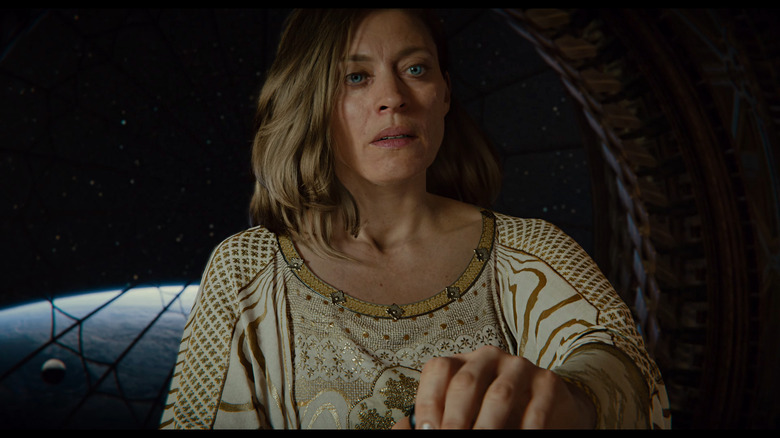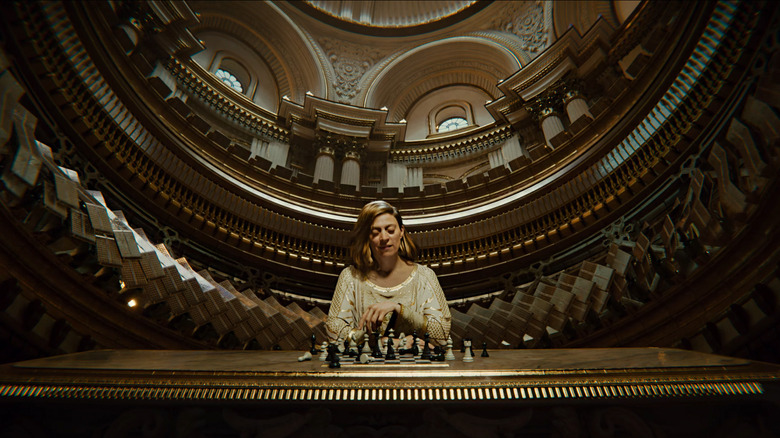Unity's Enemies Video Is A Jaw-Dropping Preview Of Gaming Tech
"Technology is incredible!" said an inconsequential NPC in "Pokemon Blue," released in 1996 on the Game Boy handheld console. Twenty-five years later, this now rings truer than ever, but technology still continues to amaze and surprise us with its boundless possibilities. Today, Unity has released a trailer that does just that — it takes your breath away with how advanced video game tech has become. And before you watch it: no, it's not real — but that's what makes it all the more amazing.
The trailer, titled "Enemies — real-time cinematic teaser," shows off the capabilities of Unity's game development engine. Every frame in the two-minute trailer was animated from scratch, but watching the trailer makes that hard to believe. Blockbuster movies often have less realistic-looking environments, and plenty of video games have much less realistic-looking people. There's no risk of uncanny valley in "Enemies" — on the contrary, the woman in the trailer looks very lifelike.
"Enemies" is the result of the work of Unity's Demo Team and was made as a means of showcasing the company's real-time 3D (RT3D) technology. That's another thing that stands out about the trailer — animating in real-time means that the tech can be used for so much more than video games. In fact, Unity is most likely aiming to rival Epic Games' Unreal Engine, which is a tool often used in various other forms of entertainment — "The Mandalorian" comes to mind as one example of that.
Unity fine-tuned all the details, even individual strands of hair
The trailer starts out with a stunning display of environment animation, showing us a room filled with statues, ornaments, windows, and columns; it looks like something you'd see in an art museum. We're then shown the mysterious woman who stars in the trailer — the patterns on her outfit as intricate as the ornaments behind her — as she plays chess. Behind her, the environment slowly changes, disappearing to reveal the Earth and a starry sky.
In order to create "Enemies," Unity utilized various technologies available in its arsenal. The entire process was described on Unity's website. Compared to "The Heretic," a previous trailer made to show off what Unity can do, there have been a number of improvements in the creation of the digital human that we can see in "Enemies." Unity points to changes like a better 3D pipeline, a special graphics card-based skin attachment system to create realistic-looking peach fuzz and similar meshes, and even tension tech to simulate blood flow simulation. The latter eliminates the need to use a facial rig to fine-tune all the minute details that make a computerized face appear human.
It may seem like a small thing, but hair is one detail that video games often fail to get right. It's not a surprise — hair is not easy to animate, there's a lot of it, and lifelike hair movements are tricky to get right. In this, Unity succeeds as well, using a new strand-based real-time hair solution to animate the character's locks. The environment has also been created using a host of new features, including Screen Space Global Illumination. Unity utilized Nvidia's Deep Learning Super Sampling (DLSS) as well as real-time ray tracing to create a demo that runs at 4K resolution.
What does this technology mean for the future?
What Unity was able to achieve in "Enemies" is outstanding, but this is undoubtedly just the beginning. There is a high demand for technology like this, and while not all games need to look this lifelike, some are already trying. If we could have this type of playable characters and environment in games, plenty of game dev studios out there would be trying to use Unity's tech. On the other hand, to play such a game at high settings would require a beastly PC or the latest gaming console, and with the current shortages, not many players are able to get either.
Let's not let the practicality of it all drag us down for now, though. Of course, this type of graphics won't become a gaming standard for years. If, and when, that time comes, there will likely be enough hardware to support it. Until then, Unity's outstanding trailer shows off potential for film directors and movie studios to take advantage of instead.
At a time when most blockbusters utilize green screens and CGI technology for their backgrounds, the ability to create something so lifelike and animate it in real-time definitely puts Unity in a competitive position against Unreal Engine. And with the protagonist looking as real as she does, it's hard not to wonder whether one day, decades from now, actors will be rare and most movies will be fully animated.

